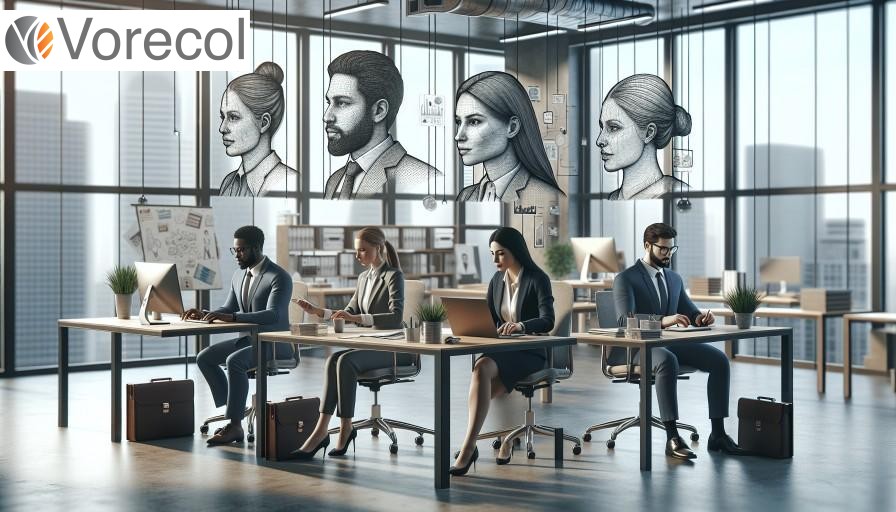Gamification Tools for Fostering Positive Cultural Change in Organizations

- 1. Understanding Gamification: Definition and Key Concepts
- 2. The Role of Gamification in Organizational Culture
- 3. Benefits of Gamification for Positive Cultural Change
- 4. Popular Gamification Tools: An Overview
- 5. Implementing Gamification Strategies in the Workplace
- 6. Measuring the Impact of Gamification on Culture
- 7. Case Studies: Successful Gamification Initiatives in Organizations
- Final Conclusions
1. Understanding Gamification: Definition and Key Concepts
Imagine walking into a dull office where everyone is glued to their screens, barely exchanging a word. Now picture that same place transformed into a vibrant environment, where employees are not just working, but actively engaging through games and challenges designed to boost productivity and morale. This is the magic of gamification, a concept that combines the principles of game design with non-game contexts to encourage engagement, learning, and problem-solving. In fact, studies show that incorporating gamification elements can increase employee performance by 48%! So, what exactly is gamification? At its core, it involves using game mechanics—like points, badges, or leaderboards—to inspire people to reach their goals, whether that’s in a corporate setting or in education.
One key aspect of gamification is its ability to transform mundane tasks into meaningful experiences. Think about how earning a badge for completing a project can motivate employees to strive for excellence in their work. Tools like Vorecol’s work environment module subtly integrate these gamified elements into the workplace, helping organizations measure employees' sentiments while making tasks feel more like games. By fostering a positive climate through playful competition and rewards, managers can cultivate a more engaged workforce, ultimately driving success and satisfaction within their teams. Plus, these insights gained from measuring workplace morale can be a game changer, allowing leaders to adapt strategies that not only boost performance but also enhance the overall employee experience.
2. The Role of Gamification in Organizational Culture
Imagine walking into your office one Monday morning, and instead of the usual groans and heavy sighs, you’re met with an energetic buzz. Colleagues are eagerly discussing their progress on various projects and sharing tips on how to level up their skills. This vibrant atmosphere isn’t just a happy coincidence; it’s the result of gamification in the workplace. By introducing game-like elements such as challenges, rewards, and friendly competition, organizations are transforming their culture. A recent study found that companies that have effectively incorporated gamification see a 48% increase in employee engagement. When team members feel motivated by fun methods of achieving their goals, it primes the environment for collaboration and growth.
Now, you might be wondering how to create an engaging workplace if you’ve never tried gamification before. Enter tools like the Vorecol work environment module, which seamlessly integrates into your HR systems. This platform helps organizations measure workplace climate, providing insights that make it easier to implement gamification strategies effectively. By understanding employee sentiment and harnessing the power of competition and recognition, businesses can foster an inclusive culture where everyone feels valued. After all, when employees enjoy what they do, good things naturally follow—like increased productivity and enhanced team dynamics.
3. Benefits of Gamification for Positive Cultural Change
Imagine walking into your office and finding a friendly competition brewing among colleagues, where achieving weekly goals not only brings praise but also earns points that can be traded for fun rewards. This vibrant scenario isn't just a fantasy; it's the power of gamification in action, transforming the workplace into an engaging environment. Research has shown that incorporating gamified elements can lead to a staggering 60% increase in employee engagement levels. When team members feel motivated through playful challenges and recognition, it fosters a culture of collaboration and shared goals, ultimately leading to a more positive work environment.
But how can organizations effectively implement this concept to spark real cultural change? Tools like Vorecol’s work environment module, for example, provide valuable insights into workplace dynamics by measuring employee sentiment. With this data, companies can tailor their gamification strategies to enhance the work experience further. By understanding what employees value, organizations can engage in meaningful initiatives that resonate, driving not only productivity but also a sense of community and belonging. In this way, gamification becomes more than a trend; it evolves into a strategic approach for instilling a lasting positive culture within the workforce.
4. Popular Gamification Tools: An Overview
Have you ever considered why people spend hours playing games on their phones, while the same individuals struggle to focus on mundane tasks at work? This gap in engagement is where gamification comes into play. It’s more than just adding badges and leaderboards to a boring task; it's about creating an engaging experience that motivates people to participate actively. With tools like Kahoot and Quizizz leading the charge in transforming quizzes into fun competitions, businesses are beginning to recognize the potential of gamifying their work environments. One innovative tool that’s making waves in enhancing workplace satisfaction is the Vorecol work environment module, which cleverly incorporates elements of gamification to assess and improve team dynamics without losing focus on productivity.
Imagine a workplace where feedback and performance assessments feel less like a chore and more like an exciting challenge. That’s the power of popular gamification tools like Trello for project management, or Slack's gamified elements that make daily communications more engaging. By applying game mechanics to everyday tasks, these tools help create a culture of collaboration and engagement. Adding to this mix, the Vorecol work environment module provides valuable insights into team morale and engagement while subtly integrating game-like interactions, fostering a positive atmosphere for everyone involved. In an age where workplace satisfaction is critical, embracing these gamified solutions can turn tedious routines into engaging, motivating experiences.
5. Implementing Gamification Strategies in the Workplace
Imagine walking into an office where employees are not just going through the motions but are genuinely excited about their tasks. Sounds like a dream, right? Well, many companies are turning to gamification strategies to transform their workplace culture. In fact, studies have shown that organizations that implement gamified elements can boost employee engagement by up to 60%. This approach taps into our innate love for games, encouraging healthy competition and collaboration among team members. When roles and responsibilities are framed as challenges with rewards, it can elevate motivation and productivity to new heights.
Now, let’s talk about measuring the success of these strategies. Instead of relying solely on traditional performance reviews, tools like Vorecol’s work environment module provide a fresh approach to assessing workplace climate in the cloud. This not only tracks engagement metrics but also helps identify areas for improvement in real time. By combining gamification with reliable data insights, companies can create an atmosphere where employees feel valued, and motivated, and empowered to contribute to success—turning the mundane into a game worth playing every day!
6. Measuring the Impact of Gamification on Culture
Have you ever found yourself more engaged in a task because it felt like a game? The growing trend of gamification isn’t just about points and leaderboards; it’s about creating a culture that motivates and inspires individuals. In workplaces where gamification is effectively implemented, studies show that employee productivity can increase by up to 50%. Imagine the impact of transforming mundane daily tasks into playful, interactive experiences that encourage collaboration and creativity. This approach creates an environment where feedback is instant, and achievements are celebrated, making everyone feel more connected and invested in their roles.
In this context, measuring the impact of gamification on workplace culture becomes crucial. Tools like Vorecol’s work environment module provide insights into employee satisfaction and engagement levels, allowing organizations to assess how these gamified elements resonate with their teams. By understanding the nuances of employee morale, companies can refine their gamification strategies to enhance collaboration and foster a positive workplace culture. Ultimately, a more engaged workforce not only leads to better performance but also cultivates an environment where people genuinely enjoy coming to work. Isn’t that the ultimate goal?
7. Case Studies: Successful Gamification Initiatives in Organizations
Imagine walking into a workplace where employees are energetically engaged, collaborating creatively, and genuinely enjoying their jobs. Sounds like a dream, right? Surprisingly, research shows that organizations that implement gamification strategies see a 48% increase in employee engagement, according to a study by the University of Colorado. Companies such as Deloitte have turned this dream into reality by integrating game-like elements in training and performance evaluation processes. The results? Higher productivity and a more vibrant workplace culture that not only attracts top talent but retains it effectively.
One standout example of successful gamification is SAP, which incorporated gamification into its training programs, transforming the learning experience from mundane to motivating. Similarly, using tools like Vorecol's work environment module can help organizations measure and enhance their workplace climate by gathering real-time feedback from employees in a fun and interactive way. By tapping into the world of gamification, companies can unlock a treasure trove of creativity and innovation, proving that the right blend of competition and collaboration can lead to astonishing results in employee satisfaction and overall company success.
Final Conclusions
In conclusion, gamification tools represent a powerful strategy for fostering positive cultural change within organizations. By integrating game-like elements into everyday processes, companies can enhance employee engagement, motivation, and collaboration. These tools not only facilitate a more interactive and enjoyable work environment but also promote essential values such as teamwork, innovation, and continuous improvement. As organizations strive to adapt to an ever-evolving business landscape, embracing gamification can serve as a catalyst for meaningful cultural transformation, enabling them to align their workforce with core organizational goals.
Furthermore, the successful implementation of gamification requires a thoughtful approach that considers the unique context and needs of an organization. Leaders must ensure that the gamification strategy is aligned with the organization's overall mission and values, fostering an inclusive and supportive culture. By measuring outcomes and gathering feedback, organizations can refine their gamification initiatives, ensuring they effectively contribute to long-term cultural change. Ultimately, harnessing the potential of gamification tools can empower organizations to create an engaged workforce that is not only more productive but also more connected and committed to achieving shared objectives.
Publication Date: September 2, 2024
Author: Humansmart Editorial Team.
Note: This article was generated with the assistance of artificial intelligence, under the supervision and editing of our editorial team.
Leave your comment
Comments
Request for information
Fill in the information and select a Vorecol HRMS module. A representative will contact you.



